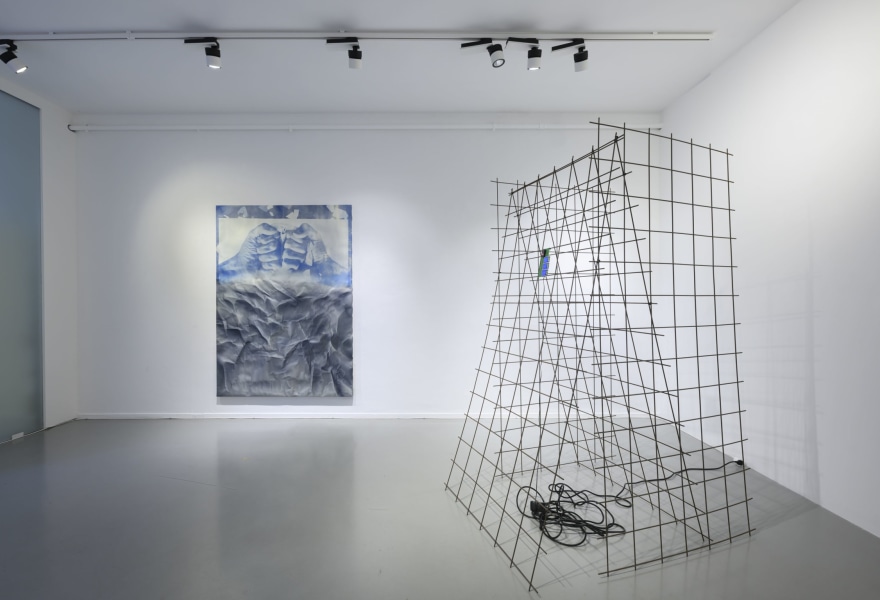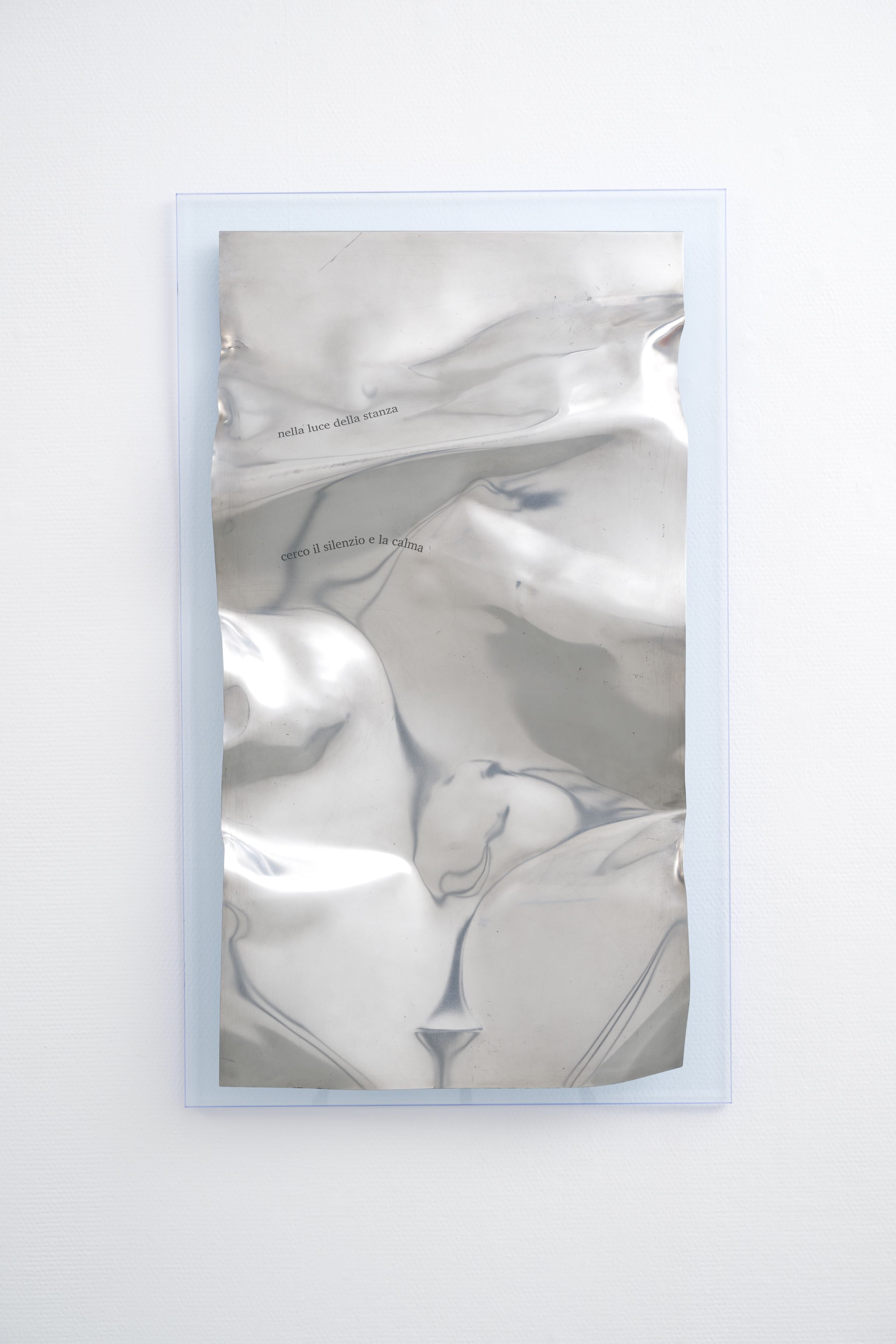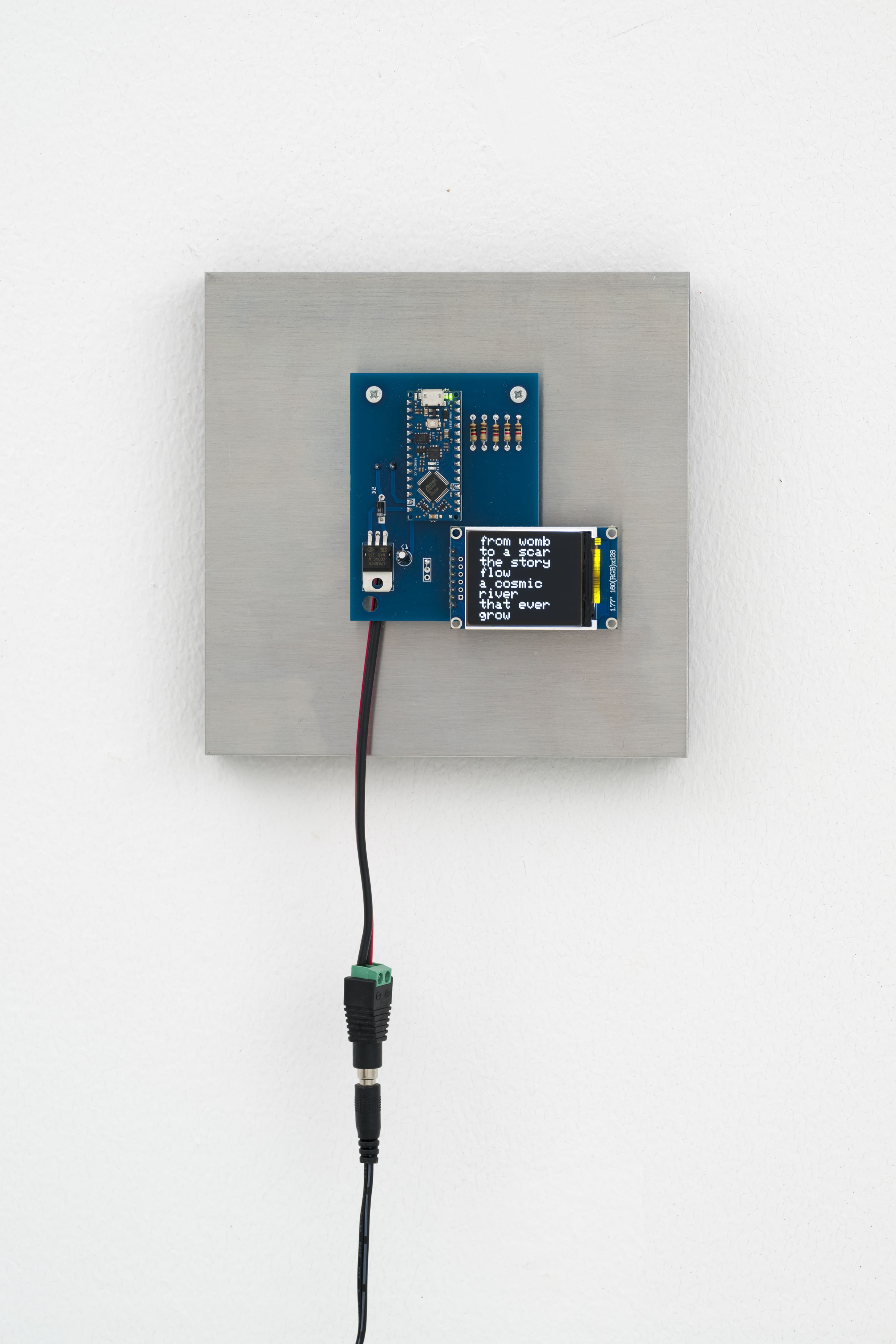18 february 2025, Flor Linckens
Silvia Gatti: the poetic transformation of language and matter
Until 8 March, andriesse~eyck gallery in Amsterdam presents 'BRIEFLY HUMANS', a solo exhibition by Silvia Gatti. In her second solo presentation at the gallery, the Italian artist explores the interplay between human and machine, body and consciousness, physical and digital language. She presents a new body of work in which these boundaries continuously shift and are redefined. Gatti: “The body of my work is mainly centred on the exploration of bodily and digital language and their combined effects on reality. In my art practise, I’m constantly learning from the experience of being a human." Gatti is currently a resident at the Rijksakademie in Amsterdam.
Gatti’s multidisciplinary practice incorporates elements of architecture, poetry, video, sound and performance. In her latest series, she creates imaginary landscapes that hover between the earthly and the cosmic. Here, she not only questions the essence of human experience but also the mechanisms underlying it. What does it mean to belong? How do the body and consciousness relate to a world that is becoming increasingly digital, influenced by (generative) artificial intelligence?
Silvia Gatti was born in Alessandria, Italy, in 1983. She studied Architecture and Urban Planning at the University of Genoa before graduating cum laude from the Gerrit Rietveld Academie in Amsterdam, where she currently lives and works. Her background in architecture subtly informs her artistic practice — she considers the human body to be like a landscape, a terrain where identity and experience can unfold. In her drawings and sculptures, the skin functions as a boundary — between interior and exterior, between an individual and their environment.
Gatti’s intuitive and conceptual work is deeply rooted in language, both written and spoken, and manifests as a form of visual and auditory poetry. One of the works in the exhibition, for instance, contains the phrase “I want to go back to believing in a story.” Other pieces bear texts such as “My body lies still, a vessel at rest, [obscured sentence], on eternal quests” and “when stars scatter across the night and the world is fading away.” At times, these phrases are only partially visible or obscured from the viewer’s gaze. Gatti approaches language not merely as a medium but as a dynamic, ever-changing process in which phrases are formed, erased and rewritten. This idea of continuous transformation is central to her practice and recurs in her experiments with text-based video installations and life-sized drawings.
Her choice of materials reflects this layered approach: from handmade paper, which adds an intimate and tactile dimension, to cold industrial materials such as aluminum and monitors. For the series "NELLA LUCE DELLA STANZA", featured in the exhibition, she works with thin, etched aluminum plates mounted on plexiglass. These delicate inscriptions say things like “nelle luce della stanza, ricerco il cielo muoversi” (“in the light of the room, I search for the sky to move”) and “nelle luce della stanza, cerco il silenzio e la calma” (“in the light of the room, I seek silence and calm”).
The "A/DIVINATIONS" series consists of multiple screens that generate different segments of a poem. The text continuously fluctuates, rendering the message ever-changing and elusive. The underlying electrical circuitry is exposed and reveals the digital infrastructure and programming language within the work. In doing so, Gatti highlights how language and technology interact, shaping human meaning within digital systems.
In the "Celestial Crushes" pieces, fragmented images of the body are compressed and distorted. Crumpled paper effectively turns into an abstract landscape — like a topography of skin and space. Using automotive paint, sprayed over cyanotypes and mounted on aluminum frames, Gatti explores the tension between matter and metaphysics. Gatti: “The works are intended to explore metaphysical questions, the encounter and collision between Earth and Cosmos, the paradox of the body as fragile and resilient and the yearning for surrender. The works are turned into topographic surface that crumples upon impact, against force, between heaven and heart.”



